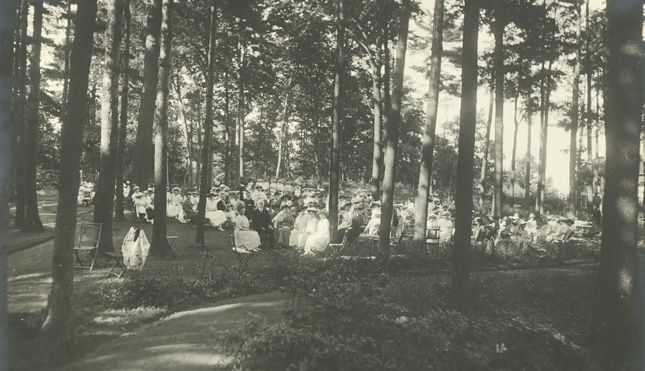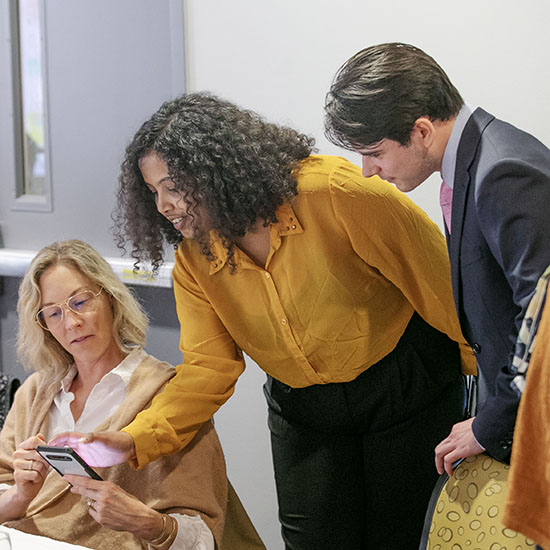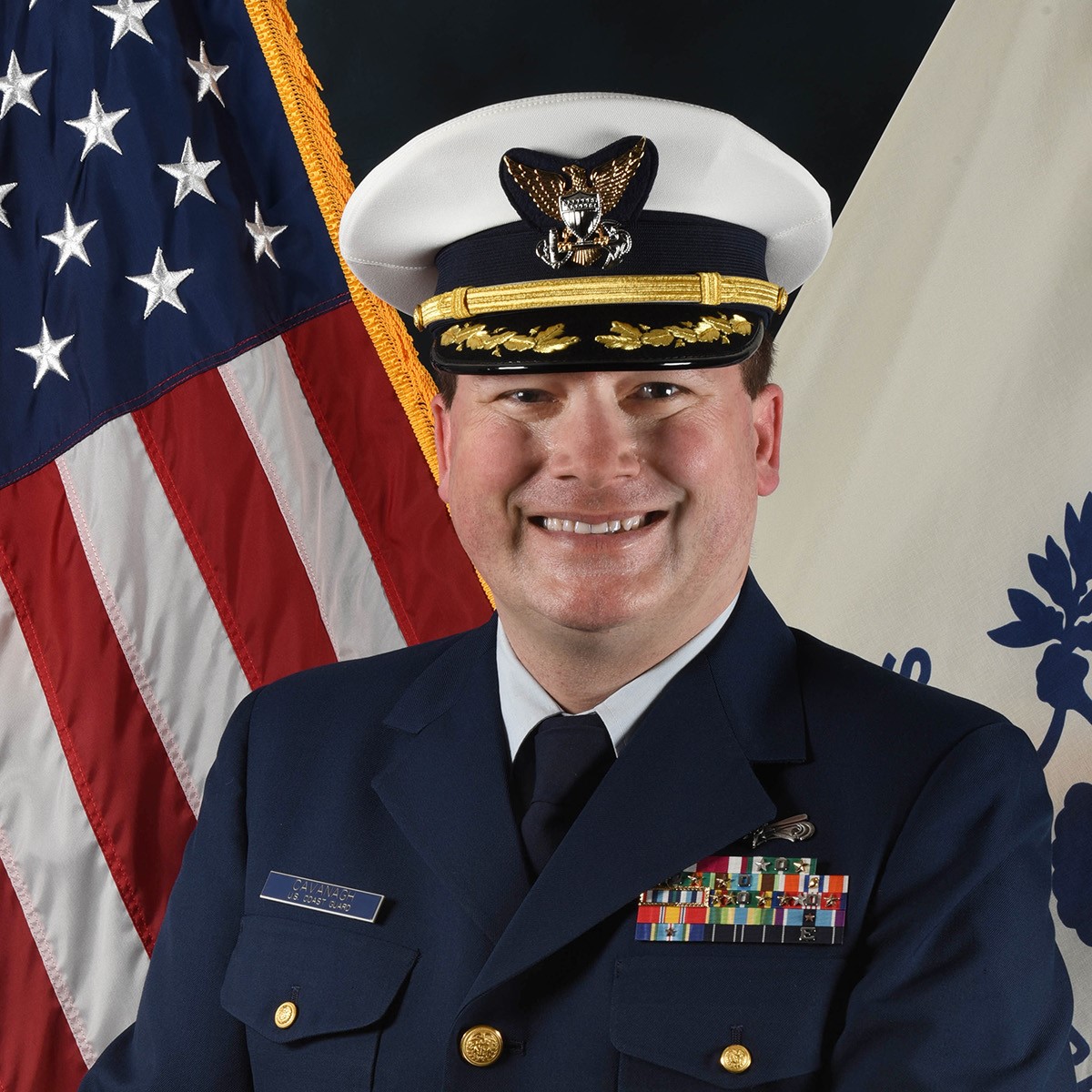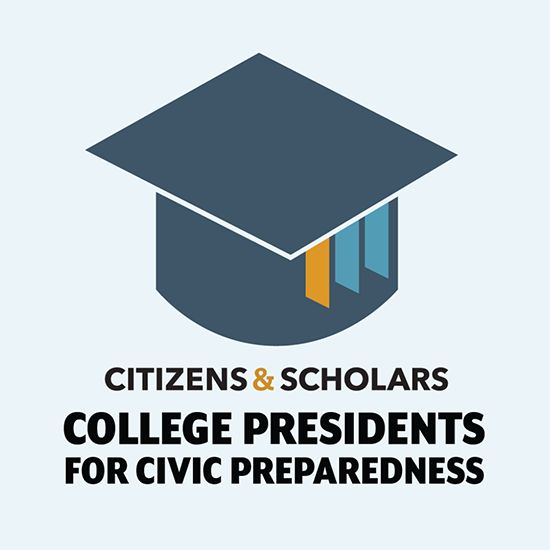Scribner House: A living reminder of Skidmore’s history
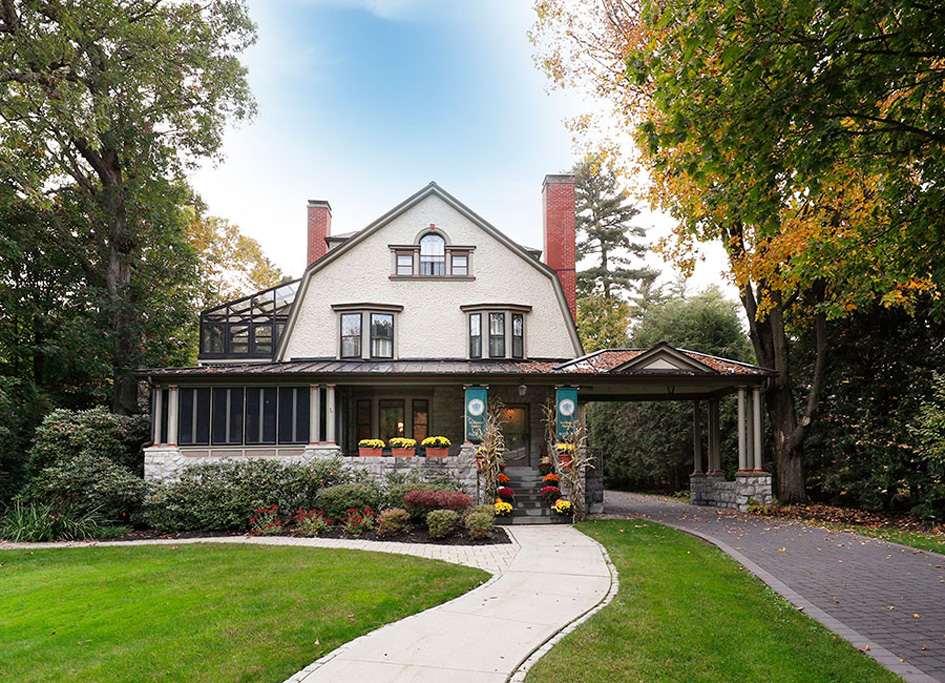
Scribner House — originally the home of Skidmore founder Lucy Skidmore Scribner and since the residence of many of the College’s presidents, including current President Marc C. Conner and his wife, Barbara Reyes-Conner — is a living reminder of Skidmore’s history and emphasis on community.
Upon moving to Saratoga Springs from New York City near the end of the 19th century, a widowed Lucy Scribner purchased the home at 791 North Broadway, along with four adjacent lots, for $28,500. Constructed around 1895, the house was a smaller and more symmetrical structure back then, but many of its distinctive features — from the gambrel roof to the wraparound porch — were there from the start.
In 1903, Scribner founded the Young Women’s Industrial Club, which became the Skidmore School of Arts in 1911 and Skidmore College in 1922. She devoted much of her inheritance to Skidmore and remained a guiding force for the College until her death in 1931.
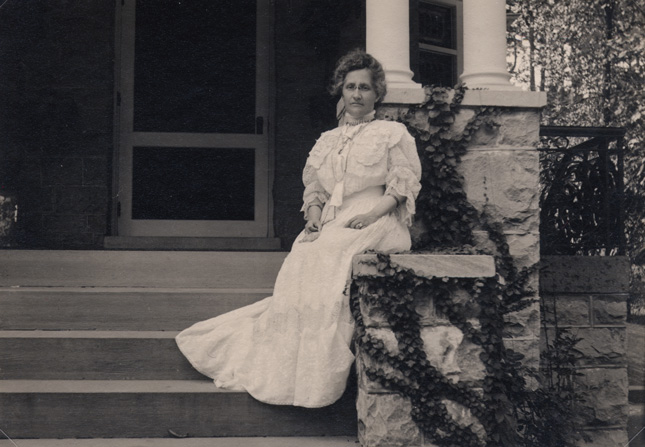
Lucy Skidmore Scribner sits on the front steps of Scribner House, which she called Sunshine Cottage, in the early 1900s.
Scribner’s renovations to the home reflected much of her personality. She added a second-story solarium, which she referred to fondly as her “nest,” and she had most of the residence painted and papered in yellow, dubbing the home Sunshine Cottage, according to Mary Elizabeth Finch Larsen, Scribner’s personal secretary.
Lucy Scribner’s role in Skidmore history also attests to her dedication to education, scholarship, and service. Though she described herself as a student of the arts rather than as an artist or a writer, she possessed a creative mind and the keen ability to appreciate the power of ideas.
While enlarging and remodeling the house as a year-round residence, she changed the style of the windows and added the stained glass on the first floor that distinguishes Scribner House from its neighbors. These luminous displays feature characters from classic literature, including King Cophetua and the Beggar Girl, Hector and Andromache of Homer’s “Iliad,” and the goddess Minerva who walks holding a candle. In the dining room’s south-facing windows, the poetry of Sir Walter Scott is scripted beneath representations of the Scottish countryside; and Troilus and Cressida make an appearance at the staircase on the northern side.
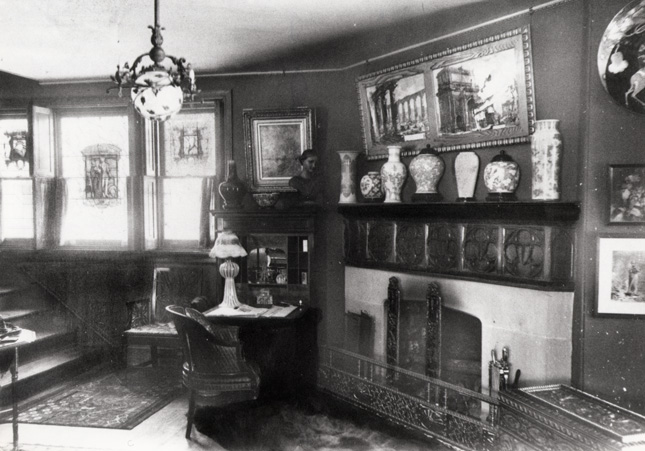
Lucy Scribner filled Scribner House with artwork and furnishings she collected from around the world.
Additional architectural features and varied furnishings speak to Scribner’s sophisticated tastes and her extensive travel abroad. Numerous Chinese and Japanese export porcelains, a Venetian mirror, and Chippendale furniture can be found in the Scribner Collection today.
Lucy Scribner’s changes to the grounds also reflect the College’s longstanding spirit of community. Although two modern houses now occupy the area east of Scribner House, she purchased 12 additional lots across the street and developed them into a park-like garden for Skidmore gatherings and receptions. The tool shed and the gardener’s cottage remain.
After Lucy Scribner’s death in 1931, the home remained vacant until 1937, when Skidmore’s second president, Henry T. Moore, negotiated a trade with Anna May Boone Scott to allow the College to acquire Scott’s home on the corner of Union and Nelson avenues, close to the old campus. Anna Scott, a descendant of Daniel Boone, occupied the house at 791 North Broadway until 1943, and it changed hands twice more before the College reacquired it in 1964.
Three years after construction of the new campus was underway on 650 acres of land at the end of North Broadway — the very place Lucy Scribner had hoped to locate the College 50 years earlier —Skidmore’s third president, Val Wilson, decided it would be ideal to have a senior college official living close to the developing campus to keep an eye on what was happening. John “Ted” Butler, Skidmore’s business manager and comptroller at the time, was asked to take on the additional responsibility. He, his wife, and his eventually eight children lived in Scribner House from 1965 until Butler’s retirement in 1986.
It was finally in the fall of 1987 that Scribner House would become the official home of a Skidmore president, as it has remained ever since.
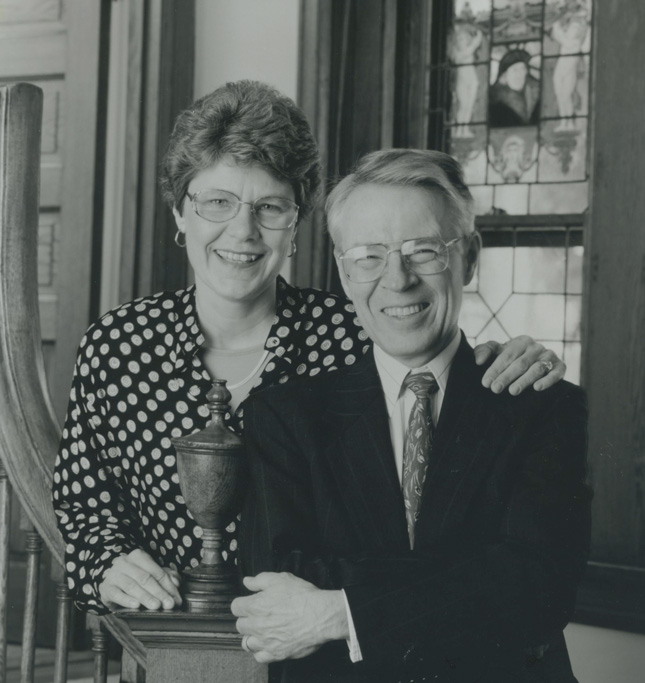
Helen and David Porter at home in Scribner House in 1998, with Lucy Scribner's stained-glass windows in the background. (Photo by Mark McCarty)
Skidmore’s fifth president, David Porter, and wife Helen Porter took up residence in Scribner House upon deciding that “the elegant Wilson House was not a good fit for the new presidential couple,” according to “Make No Small Plans: A History of Skidmore College.” The College’s Facilities Services team, an architect, and an interior designer got to work renovating Lucy Scribner’s original Sunshine Cottage, making it once again suitable for hosting College events and receptions. Some of Scribner’s remaining furnishings, most notably her piano, were restored to the house, and its care and preservation became the special province of Helen Porter.
When Scribner House became the home of Skidmore's sixth president, Jamienne S. Studley, and husband Gary Smith in 1999, they turned the back of the house into a modern and more functional kitchen. The former kitchen space was renovated to exhibit the Studley-Smith collection of woodturnings, sculpture, and Native American pottery.
With the arrival of Skidmore’s seventh president, Philip Glotzbach, and wife Marie Glotzbach in 2003, the living room and dining room were repainted to reflect Skidmore’s colors of yellow and green and to honor the home’s Victorian heritage. The library was transformed into a warm, historic room with burgundy walls where selected artwork and objects from the Tang Collection, as well as many pieces from Lucy’s personal collection, are now displayed. The Glotzbachs fondly referred to “the president’s house as the living room of the campus.”
Skidmore’s eight president, Marc Conner, and wife Barbara Reyes-Conner moved into Scribner House in late June of 2020, days before Conner officially took office on July 1, 2020. They too have worked with an interior designer to put their own stamp on the residence.
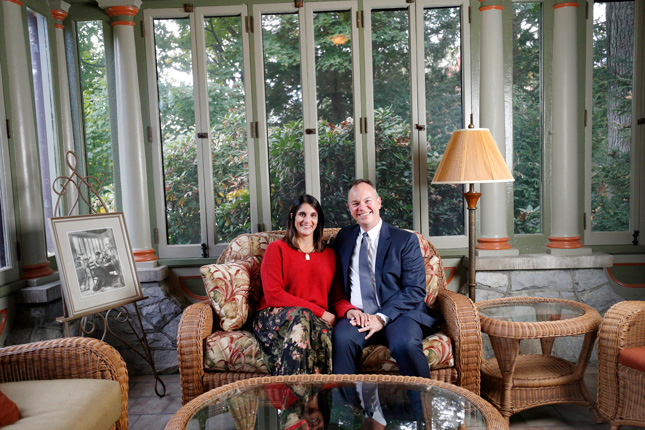
Barbara Reyes-Conner and Marc Conner sit on the porch of Scribner House, which President Conner identifies as his favorite part of the house. A portrait of Lucy Skidmore Scribner is seen to the left.
President Conner says the sun porch at the front of the house is his favorite spot, especially to work.
While events and receptions at Scribner House have been delayed by the COVID-19 pandemic, the Conners plan to resume the tradition of welcoming members of the Skidmore community to the historic home.
Also delayed by the challenges posed by COVID-19, Conner’s inauguration took place Saturday, Oct. 16, at Arthur Zankel Music Center and was livestreamed for members of the Skidmore community watching virtually.
President Conner made mention of the historic residence in his inaugural address.
“Barb and I are so proud to live in Scribner House, where Lucy conceived of Skidmore College. She had a vision, of an institution that could provide a liberating education, an education that joined together the mind and the hand to help her students change their own lives so they could then go out and change the world," Conner said. "Has our mission changed in the century since Lucy? No.”
